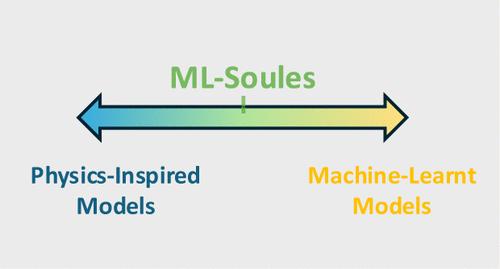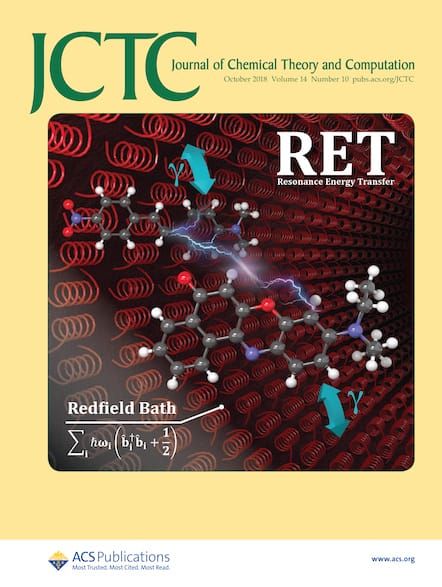Machine Learning a Simple Interpretable Short-Range Potential for Silica
IF 5.7
1区 化学
Q2 CHEMISTRY, PHYSICAL
引用次数: 0
Abstract
A wide array of models, spanning from computationally expensive ab initio methods to a spectrum of force-field approaches, have been developed and employed to probe silica polymorphs and understand growth processes and atomic-level dynamical transitions in silica. However, the quest for a model capable of making accurate predictions with high computational efficiency for various silica polymorphs is still ongoing. Recent developments in short-range machine-learned models, such as GAP and NNPScan, have shown promise in providing reasonable descriptions of silica, but their computational cost remains high compared to force fields such as BKS which are based on simple interpretable functional forms. Here, we build on the recent success of our reinforcement learning (RL) workflow to derive a new set of optimal parameters for a promising short-range BKS-based model proposed by Soules. We use RL to navigate the eight-dimensional parameter space of the Soules potential using an experimental training data set that includes both local and global structural features from approximately 21 experimentally realized silica polymorphs, including high density phases and porous zeolites. We compare the performance of our machine-learned ML-Soules model with other high quality models including our recent machine-learned parametrization of BKS (ML-BKS), a machine-learned potential (GAP), as well as predictions of ab initio calculations with the highly fidelity SCAN functional. The ML-Soules accurately captures the relative energetic ordering of various polymorphs as well as their structural features at a significantly reduced computational expense. The ML-Soules model also reasonably captures the structure, density, and elastic constants of quartz, as well as metastable silica polymorphs. We further discuss the limitations of the Soules functional form and propose potential enhancements, including the incorporation of additional three-body terms and/or the utilization of different short-ranged functional forms to achieve greater accuracy for both global and local features in the modeling of silica while retaining low computational cost.

机器学习简单解释二氧化硅的短程潜力
为了探究二氧化硅多晶体,了解二氧化硅的生长过程和原子级动力学转变,人们开发并使用了一系列模型,从计算成本高昂的原子序数方法到一系列力场方法。然而,人们仍在寻求一种能够以高计算效率对各种二氧化硅多晶体进行准确预测的模型。短程机器学习模型(如 GAP 和 NNPScan)的最新进展表明,它们有望对二氧化硅进行合理的描述,但与基于简单可解释函数形式的力场(如 BKS)相比,它们的计算成本仍然很高。在此,我们以强化学习(RL)工作流程最近取得的成功为基础,为苏尔斯提出的基于 BKS 的有前途的短程模型推导出一组新的最佳参数。我们使用 RL 来导航 Soules 势的八维参数空间,使用的实验训练数据集包括约 21 种实验实现的二氧化硅多晶体的局部和全局结构特征,其中包括高密度相和多孔沸石。我们将机器学习 ML-Soules 模型的性能与其他高质量模型进行了比较,包括我们最近的 BKS 机器学习参数化模型(ML-BKS)、机器学习势能模型(GAP)以及使用高保真 SCAN 函数进行的 ab initio 计算预测。ML-Soules 模型准确地捕捉到了各种多晶体的相对能量排序及其结构特征,同时大大降低了计算成本。ML-Soules 模型还合理地捕捉到了石英以及可蜕变二氧化硅多晶体的结构、密度和弹性常数。我们进一步讨论了苏尔斯函数形式的局限性,并提出了潜在的改进方案,包括加入额外的三体项和/或利用不同的短程函数形式,从而在保持低计算成本的同时,在二氧化硅建模中实现更高的全局和局部特征精度。
本文章由计算机程序翻译,如有差异,请以英文原文为准。
求助全文
约1分钟内获得全文
求助全文
来源期刊

Journal of Chemical Theory and Computation
化学-物理:原子、分子和化学物理
CiteScore
9.90
自引率
16.40%
发文量
568
审稿时长
1 months
期刊介绍:
The Journal of Chemical Theory and Computation invites new and original contributions with the understanding that, if accepted, they will not be published elsewhere. Papers reporting new theories, methodology, and/or important applications in quantum electronic structure, molecular dynamics, and statistical mechanics are appropriate for submission to this Journal. Specific topics include advances in or applications of ab initio quantum mechanics, density functional theory, design and properties of new materials, surface science, Monte Carlo simulations, solvation models, QM/MM calculations, biomolecular structure prediction, and molecular dynamics in the broadest sense including gas-phase dynamics, ab initio dynamics, biomolecular dynamics, and protein folding. The Journal does not consider papers that are straightforward applications of known methods including DFT and molecular dynamics. The Journal favors submissions that include advances in theory or methodology with applications to compelling problems.
 求助内容:
求助内容: 应助结果提醒方式:
应助结果提醒方式:


